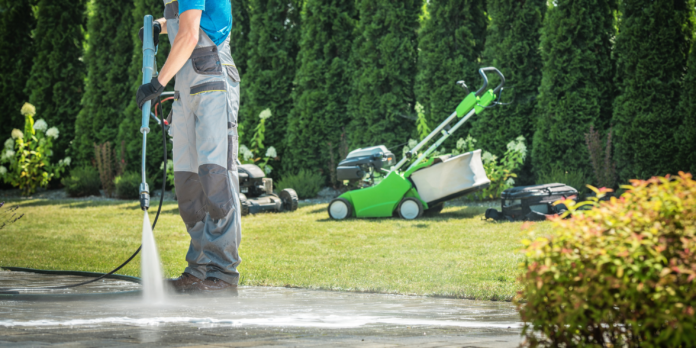Suppose you want to get the most out of your pressure washer to get the best results and more power. We will go over some basic things you need to know about the product and how it works before you even think about washing anything.
We will cover what types of nozzles are included with a pressure washer, what each type of nozzle is used for, and how to adjust the nozzles accordingly.
In addition, we will cover how you need to clean your pressure washer after every use and steps that need to be taken before storing it so that you prolong its life.
What Type of Nozzle Does Your Pressure Washer Have?
Pressure washers come with two nozzles: a turbo nozzle or an adjustable cone nozzle. A turbo nozzle is used for cleaning hard surfaces such as patios, while the adjustable cone nozzle is ideal for washing vehicles and other types of objects or surfaces that may be delicate.
Cleaning Your Nozzle: What Needs to Be Done?
Nozzles tend to get clogged after repeated use and, if not cleaned, could affect your pressure washer’s performance from working at all. Whether you have a turbo or an adjustable cone nozzle, there are several steps that you need to take when it comes time to clean it out.
However, there are some differences between the two types of nozzles regarding how they should be cleaned. The adjustable cone nozzle should be disassembled and cleaned one part at a time, while the turbo nozzle won’t require you to do that.
You need to remove the cap and washer off the end of the pressure washer. Then, flush them thoroughly with water from your garden hose before putting them back together again.
In between uses, it would also help to put a little bit of lubricating oil inside the opening where the cap screws on too to keep it from rusting or damaging it when not in use.
How Much Are You Washing Off Your Surface?
Pressure washers can typically deliver between 1,500-4,000 PSI which is equivalent to a typical garden hose under 50-125 pounds of pressure. This is why you need to adjust your spray nozzle accordingly, depending on the type of surface that you are washing.
For example, if you are washing a stained patio or deck, then using a high-pressure setting could damage it by stripping off some of the new sealant people often put on them these days after cleaning with a garden hose alone. While if you are cleaning concrete driveways, sidewalks, or foundations, then using less pressure will not be enough to break up buildup or stains, which is why more force should be used instead.
Are There Any Safety Precautions That Need To Be Took?
Pressure washers can work at extremely high speeds and force, making them one of the most dangerous power tools today. Even using them as recommended can result in injury. Below is a list of safety precautions that you must take to avoid this:
- Keep long hair out of reach at all times since it could easily get tangled with the high-speed rotating nozzle
- People should wear eye and ear protection when operating a pressure washer (the noise is deafening)
Never use the pressure washer on an incline or uneven surface because it could cause someone to fall. If you are, try to ensure that no part of your body could get caught underneath something if you lose control or trip. This also doubles for children around the area where you are washing, so they don’t accidentally get hurt by being too close to the pressure washer itself.
Final Words – How to Get More Results Out of Your Pressure Washer
Pressure washers are great tools for cleaning hard surfaces since they can easily remove dirt buildup, grime, and stains in a short amount of time. However, it is essential to know how to properly adjust the pressure on your nozzle depending on what type of surface you are trying to clean. Also, remember that there are safety precautions that need to be taken while using this tool too.
If you follow all these steps, then your pressure washer will perform better and prolong its life expectancy.














